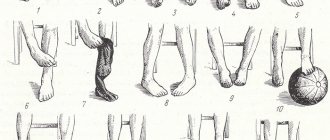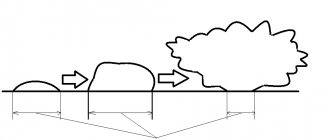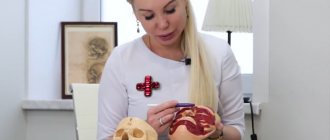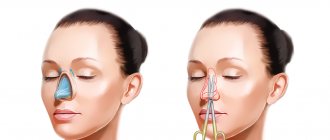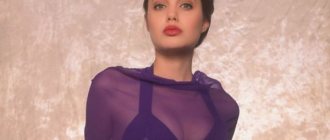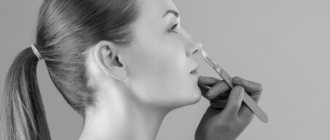The importance of nasal breathing is difficult to overestimate.
The state of human health directly depends on the unobstruction of breathing. In this process, the condition of the nasal septum plays a decisive role. The problem can only be solved with the help of septoplasty and plastic surgery of the nasal septum. During the operation, deformations of the osteochondral plate of the nose, which provoke snoring, bleeding and disrupt the dynamics of breathing, are corrected. The nose also performs an important function of humidifying and purifying the inhaled air. Septoplasty – surgical correction of the nasal septum
Patients often ask about the difference between septoplasty and rhinoplasty.
- The difference lies in the purpose of the operation:
- Rhinoplasty solves aesthetic issues: correction of the shape and size of the nose;
- Septoplasty corrects the nasal septum, improving the patient's nasal breathing.
Plastic surgeons at our clinic often combine rhinoplasty and septoplasty of the nose in one operation - rhinoseptoplasty. This helps solve the breathing problem and at the same time correct aesthetic defects of the nose.
- Indications for septoplasty:
- Difficulty in nasal breathing;
- Frequent nosebleeds;
- Heavy snoring;
- Dryness in the nasal cavity;
- Allergic reactions;
- Frequent headaches;
- Chronic diseases of the respiratory tract and paranasal sinuses: sinusitis, rhinitis, sinusitis, tonsillitis, etc.);
- Changing the shape of the nose.
Deviated nasal septum
Deviation of the nasal septum (J34.2 code according to ICD 10) is a natural or acquired persistent displacement of the bone or cartilaginous structures of the nasal septum, accompanied by impaired nasal breathing (“Otorhinolaryngology” V.T. Palchun, Moscow, 2007) The
nasal septum consists of cartilage and bone structures that divide the nasal cavity into two relatively equal halves and shapes the direction of air flow inside the nose. Thanks to this, the normal formation of free nasal breathing occurs, the inhaled air is warmed and moistened, other protective functions of the nose work normally, and the sense of smell is formed.
Curvature can arise either as a result of a direct injury to the nose, or appear gradually during a person’s growth; many see the cause of significant curvatures in injuries to the nose in early childhood - falls, birth injuries, but it seems unlikely to prove this due to the long development time.
Prominent ridge of the nasal septum
Impaired nasal breathing can have a very negative impact on the human body. Lack of nasal breathing and even just constant breathing through the mouth leads to hypoxia (oxygen starvation) and not only affects well-being, but contributes to the development of a number of pathological changes.
The nervous, cardiovascular, and hematopoietic systems react most strongly to oxygen starvation; a significant effect on the human hormonal system is possible. Patients with chronic lung diseases can be very sensitive to air quality, which is determined precisely by proper nasal breathing. After all, our nose not only breathes, but also cleans, warms and humidifies the air so that it does not irritate the respiratory tract and lungs of a person. The growing bodies of children, patients suffering from chronic diseases of the lungs and cardiovascular system, people under conditions of heavy physical activity, constant stress, and intense mental activity are very sensitive to oxygen starvation.
Prominent ridge of the nasal septum The entrance to the nose is narrowed by the curvature of the septum so much that it cannot be passed through with an endoscope
In what cases is surgery required? (indications)
The most radical method of eliminating snoring is surgery. It is aimed at eliminating the problem due to which this pathology develops. Thanks to surgical intervention, it is often possible to completely get rid of sleep disorders and significantly improve the patient’s quality of life. The operation is prescribed if it is impossible to eliminate snoring using conservative methods (using sprays to reduce swelling of the nasal mucosa or special devices that hold the tongue or jaw in the desired position).
Indications for surgery may be:
- congenital or acquired defects of the nasopharynx that make breathing difficult;
- deviated nasal septum due to injury;
- the presence of a mild form of obstructive apnea syndrome, i.e. periodic cessation of breathing during sleep for more than 10 seconds.
Surgery to correct the nasal septum
Correction of a deviated nasal septum is carried out only surgically. The operations are called septoplasty or submucosal resection of the nasal septum. Septoplasty - what is it? Sometimes this type of operation is combined with correction of the external nose and is part of rhinoseptoplasty. Before and after photos will help you understand more clearly what nasal septoplasty looks like.
It is important to understand that operations are carried out to eliminate functionally significant disorders, that is, leading to the development of pathologies that cause complaints in the patient or hidden problems in his body. Minor deviations of the nasal septum that do not cause problems with nasal breathing or contribute to the development of other pathologies are usually not subject to surgical correction.
Normal nasal septum - minor curvatures Smooth septum after septoplasty
The purpose and course of the operation is to highlight the curved bone and cartilaginous structures of the nasal septum, partially remove it, and straighten the remaining part as much as possible, while preserving the mucous membrane covering the nasal septum, leaving intact or restoring the supporting parts of the nasal septum. Access is through the patient's nostrils. There are no external incisions, so the operation leaves no visible scars. Septoplasty of the nasal septum does not change the external shape of the nose, so this intervention is invisible to others.
To perform the operation, predominantly a “cold” instrument (scalpel, etc.) is used. Laser and radio frequency technologies popularized among the masses are auxiliary.
They are used primarily for correcting nasal turbinates, sometimes making incisions in the nasal septum or working with cartilage, and stopping bleeding. In the vast majority of cases, complete correction of the nasal septum requires work with bone structures, where laser or other destructive-coagulation technology has no advantage. Nevertheless, we often encounter patients who insist on laser correction of the nasal septum, fully confident that this is the only modern method, and a cold instrument is a thing of the past. Unfortunately, this is not so, one might even say the opposite. Possessing excellent hemostatic (hemostatic) properties due to high temperature exposure, the laser burns or “welds” tissue and still cannot come close to a well-sharpened scalpel in terms of cleanliness of the incision and healing time. The world's leading clinics “still” use classical instruments when working on the nasal septum, and their standards do not include the mandatory use of a laser during surgery on the nasal septum. But in defense of the laser, we can say that it is very convenient for operations on the nasal turbinates due to its hemostatic effect, although there are many other techniques that are no less effective, such as electrical and thermal effects (including cryocoagulation, popular in Russia), and the use of ultrasound , radiofrequency methods of surgery.
There are techniques for operating on the nasal septum using a special video camera - an endoscope, which is also an option rather than a necessity.
The choice of additional equipment during surgery (endoscope, laser, radiofrequency coagulator) falls entirely on the shoulders of the specialist, not the patient. An incorrectly or inappropriately used instrument will not only not help, but will also complicate the operation. Only the surgeon knows how much this or that instrument will help him in performing the operation.
Almost always, surgery on the nasal septum (before and after photos) is combined with simultaneous correction of other intranasal structures - the turbinates.
These formations of the nasal cavity greatly affect nasal breathing, and their improper functioning can lead to the development of the pathology “Vasomotor rhinitis”. With a deviated nasal septum, the nasal turbinates often take the shape of its curvature and become asymmetrical. In this case, even with their normal functioning without correction, it is difficult to achieve good nasal breathing only through surgery on the nasal septum. Since one-time correction of the nasal turbinates and nasal septum is used everywhere, doctors often talk about correction of the nasal septum, meaning one-step correction of these structures as well. In some institutions, work with the nasal turbinates is immediately included in the cost of the operation, while in others it may be a separate item. But it is still inseparable from surgery on the nasal septum to restore good nasal breathing.
Special discount for Izhevsk residents
In addition to septoplasty, the Mart clinic offers another procedure to solve problems with nasal breathing. This is the so-called coagulation, or cauterization of the turbinates. Coagulation is often recommended for patients with vasomotor rhinitis, when nasal congestion occurs due to the constant use of vasoconstrictor drops.
“Don’t let the name of this procedure scare you,” says Elmira Mannanova. – It is performed under local anesthesia and lasts about 20 minutes, with most of this time spent on anesthetizing the patient. The doctor inserts a thin long electrode of a radio wave coagulator into the nasal concha, which affects the soft tissue within a few seconds. The nasal turbinates are reduced in volume, and after a couple of weeks the patient can breathe freely through the nose. The effect of coagulation lasts for several years if you follow all the recommendations of the otolaryngologist.
Until May 31, the clinic provides patients from Izhevsk with a 10% discount on all ENT surgery services
Attention! Until May 31 of this year, the Mart clinic provides a 10% discount on all ENT surgery services for all residents of Izhevsk and Udmurtia. Call and make an appointment.
You can read the original article at
Types of anesthesia
The operation is performed only under general anesthesia - general anesthesia.
- This type of anesthesia is more gentle on the patient’s mental state.
(the patient is asleep, does not feel anything and has good dreams

